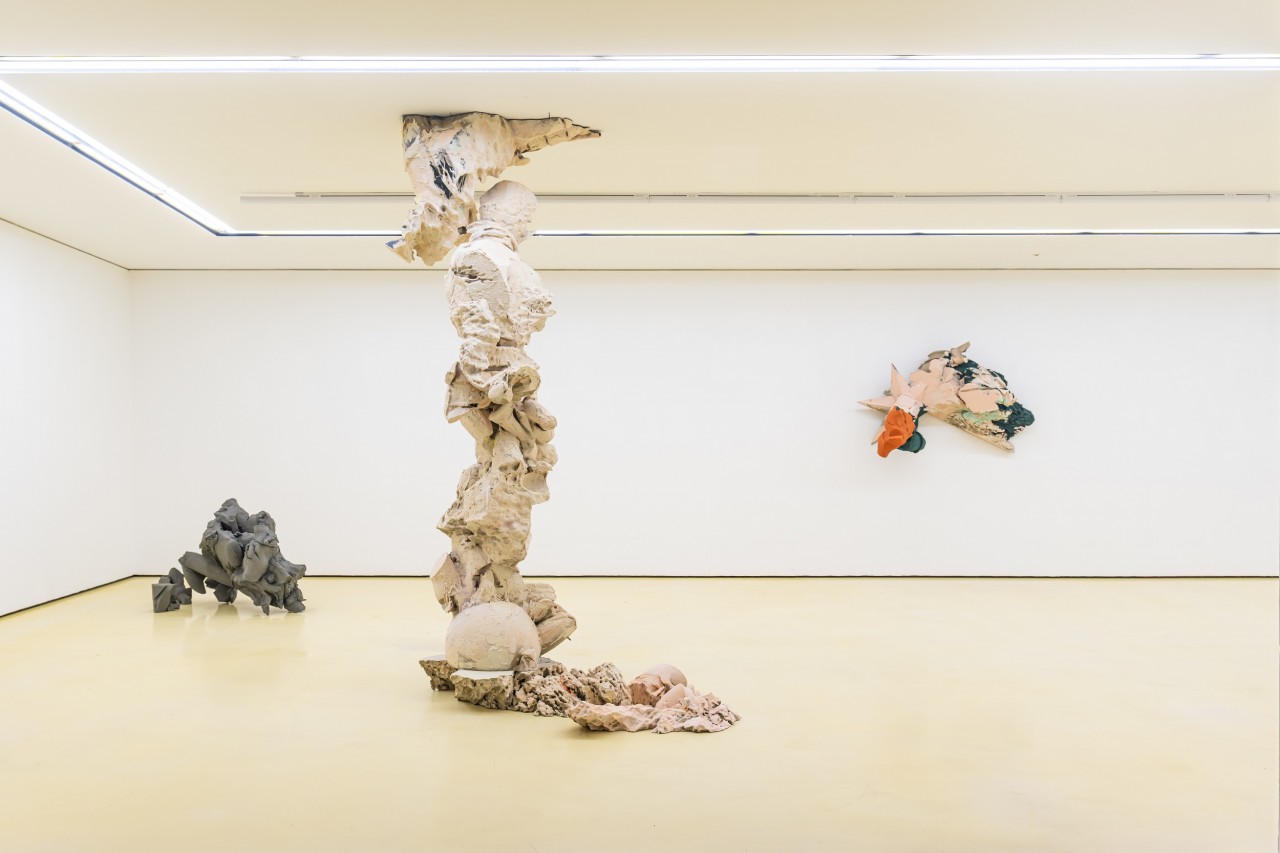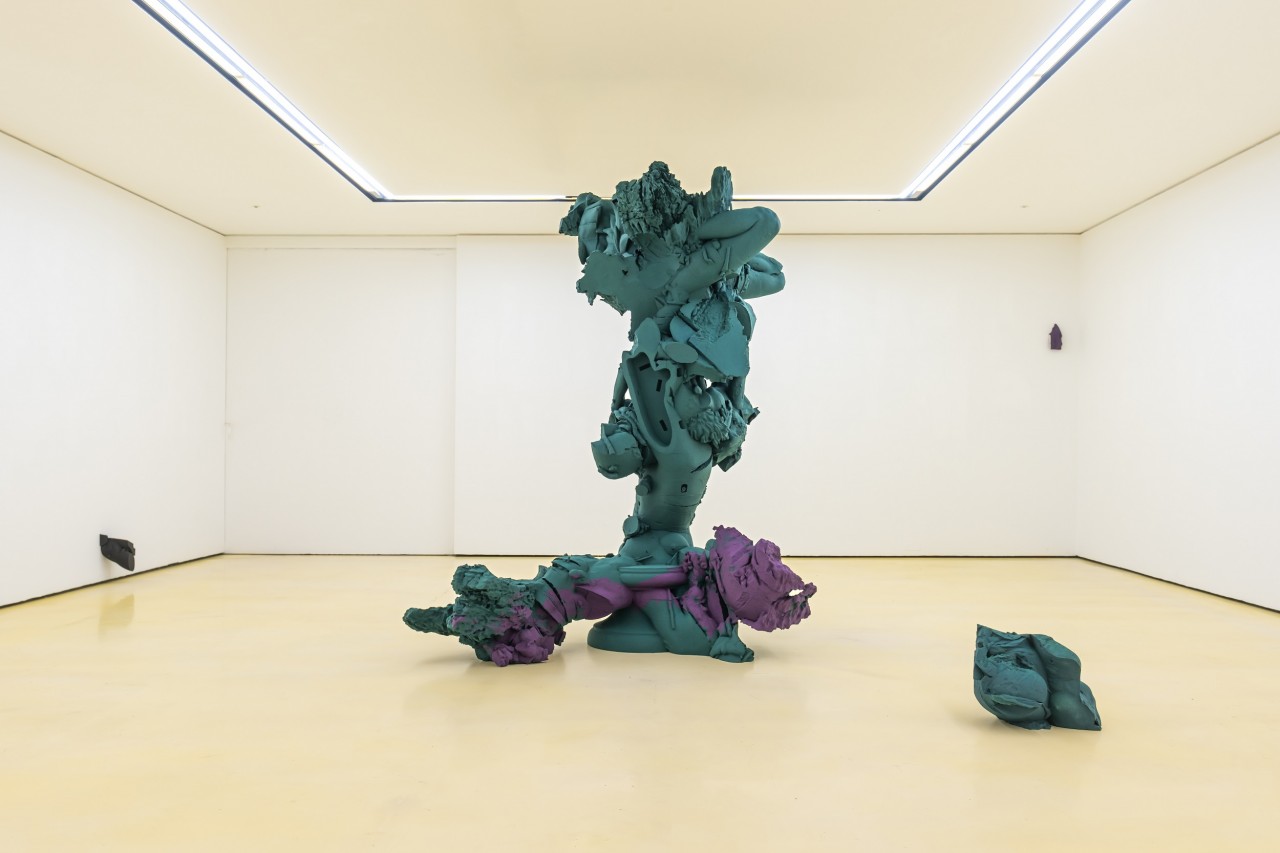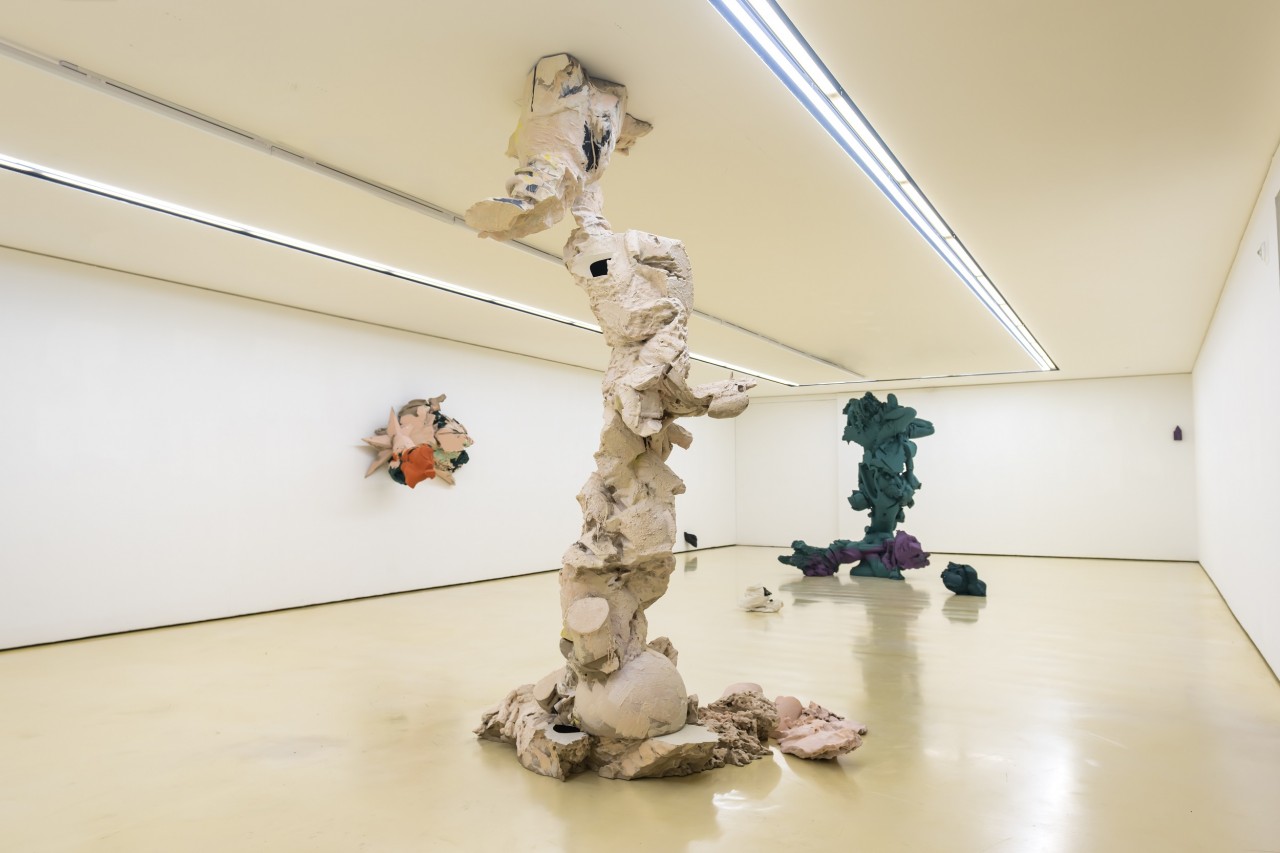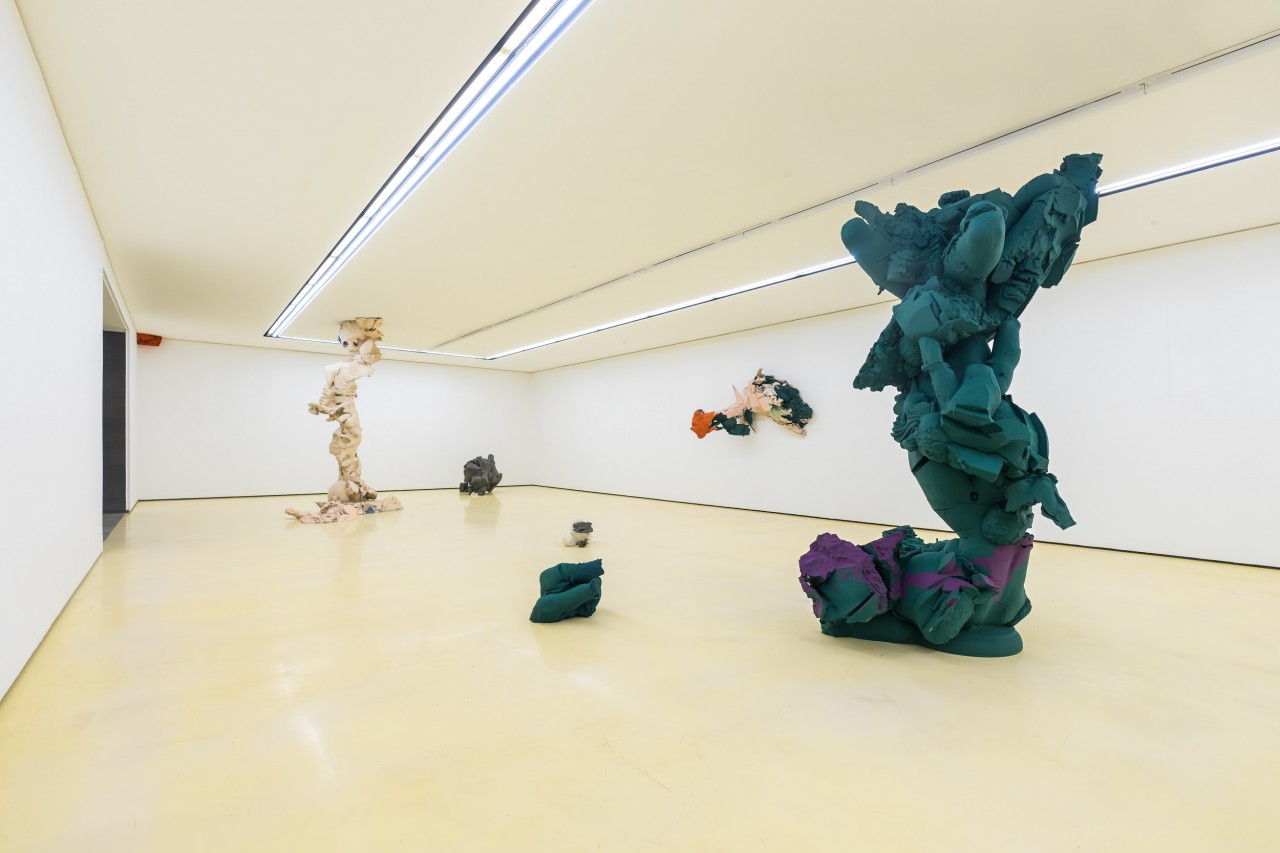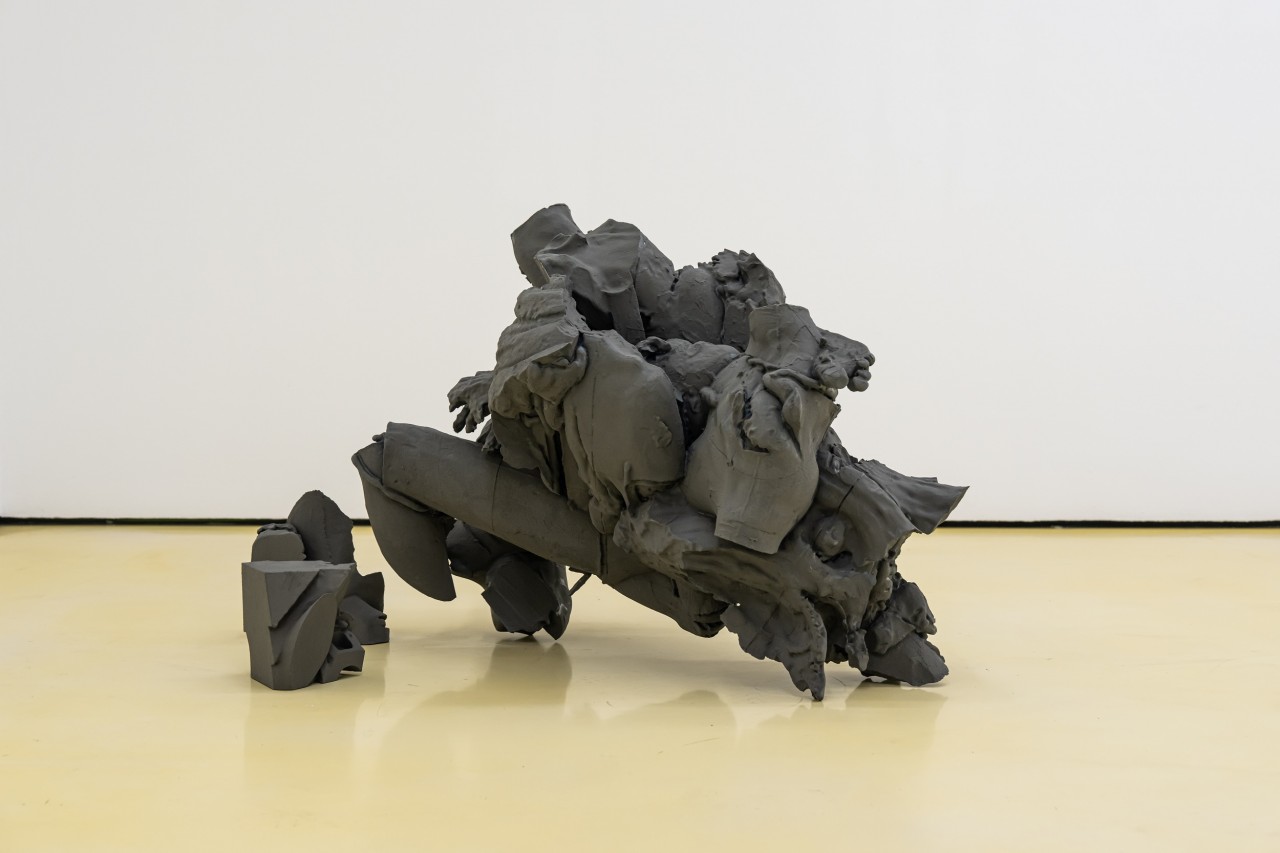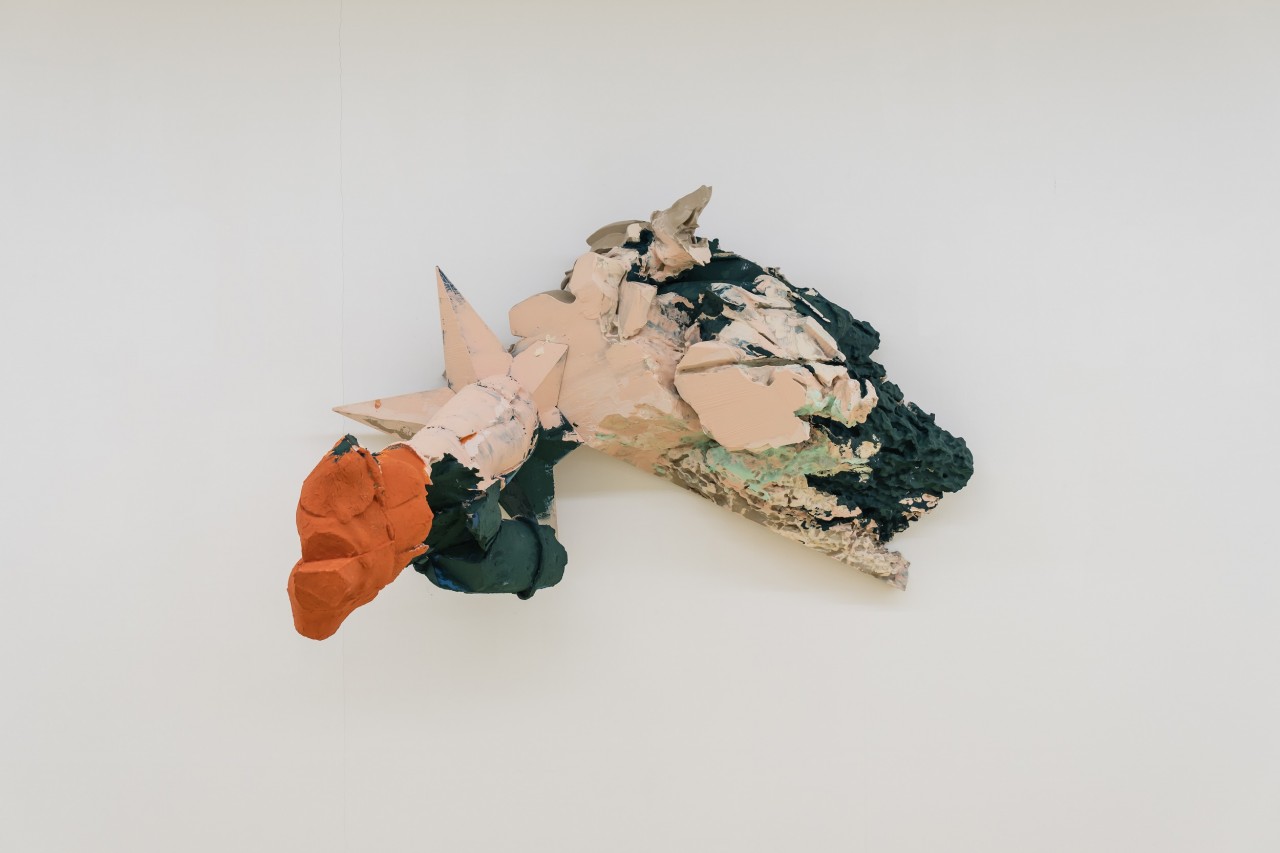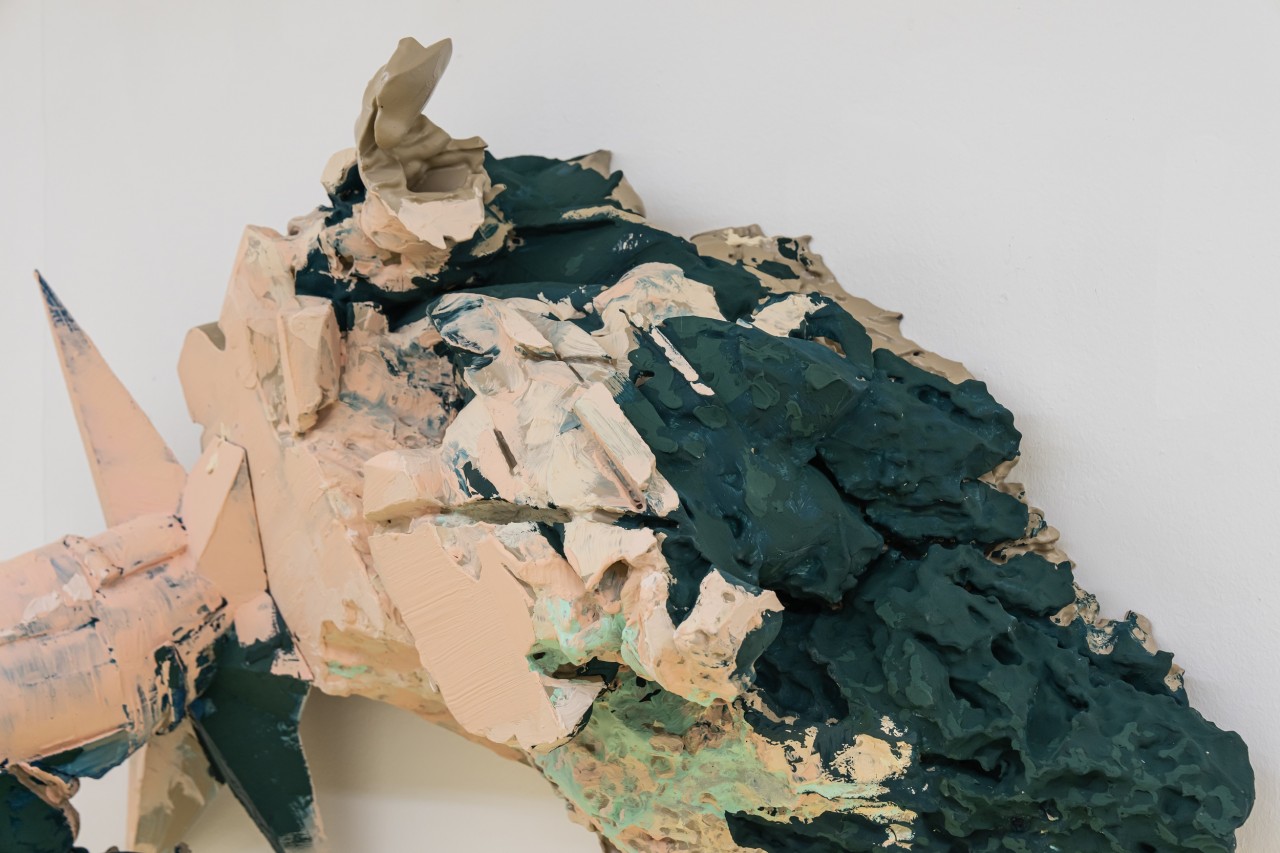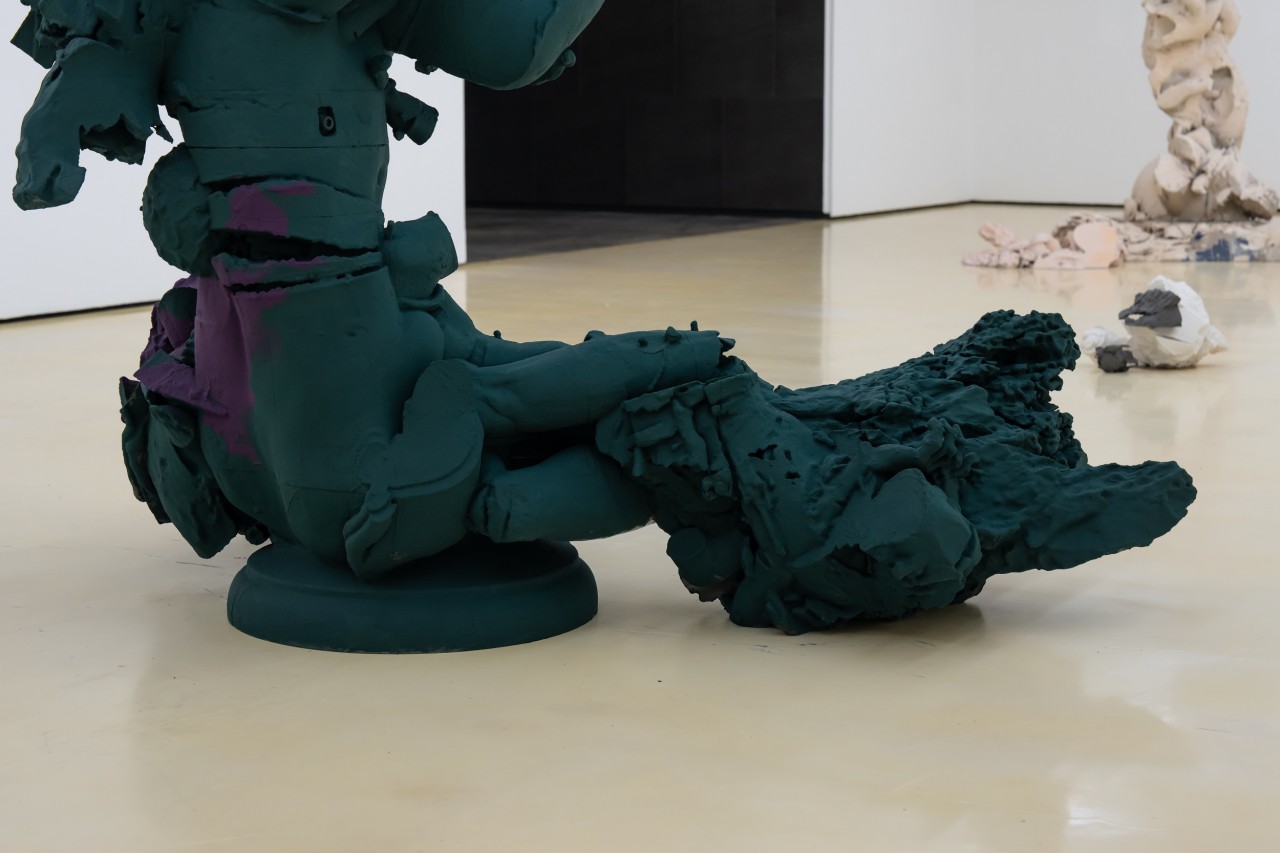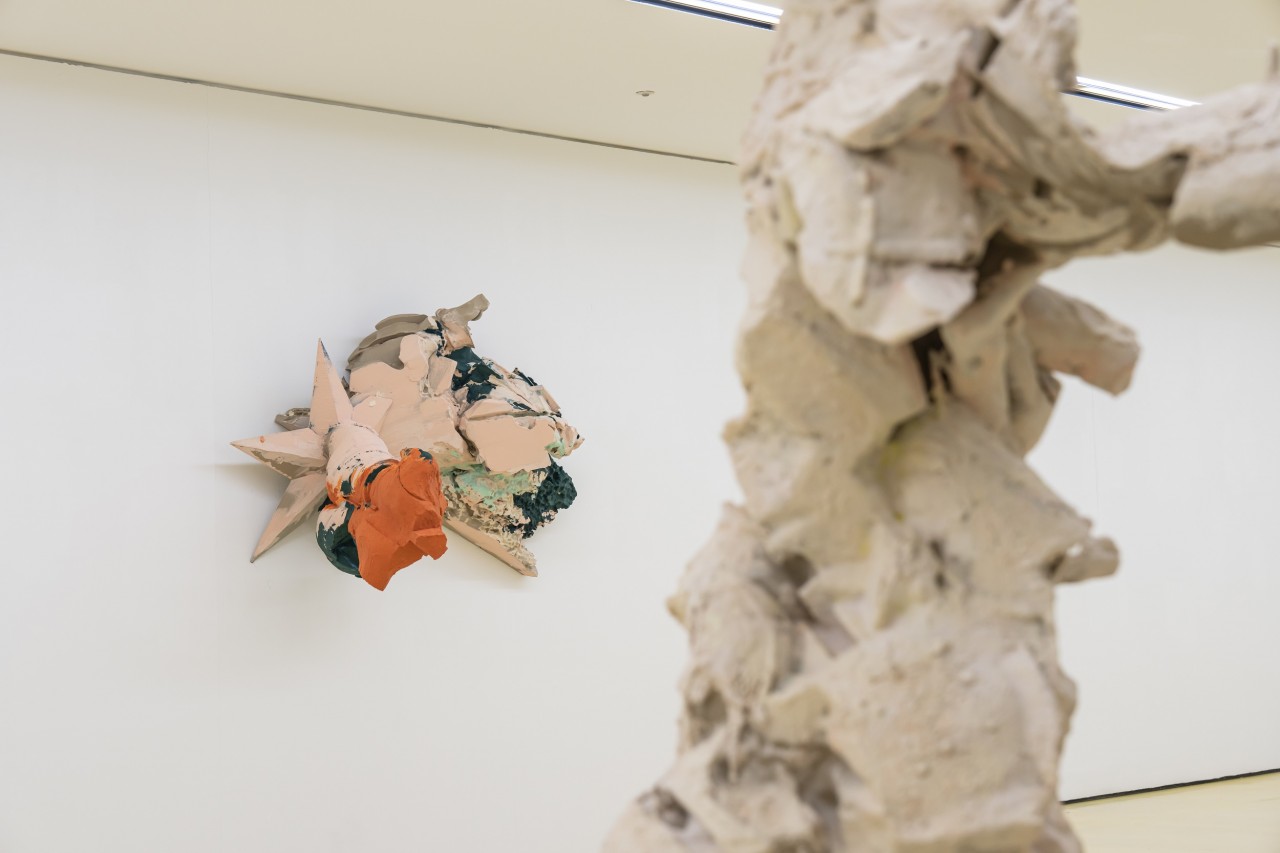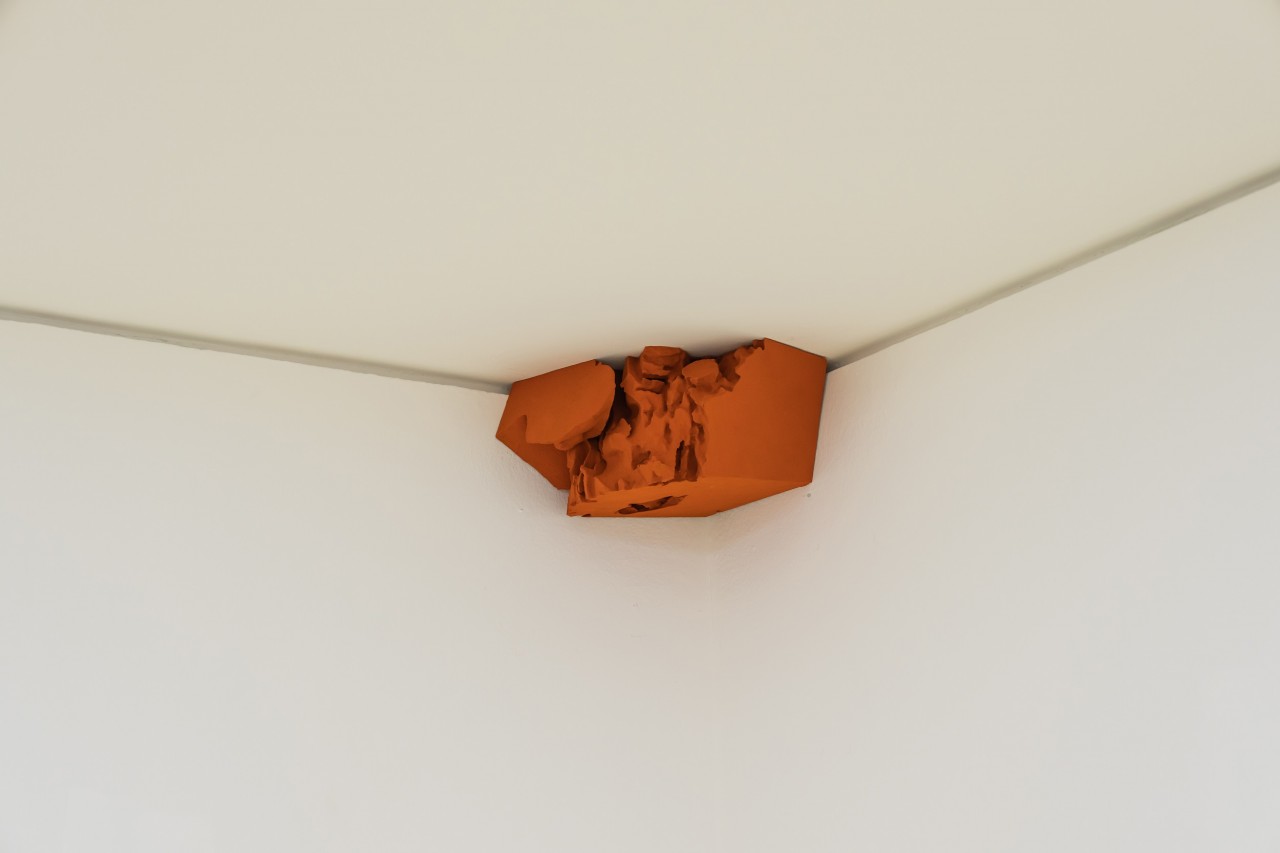Exhibitions
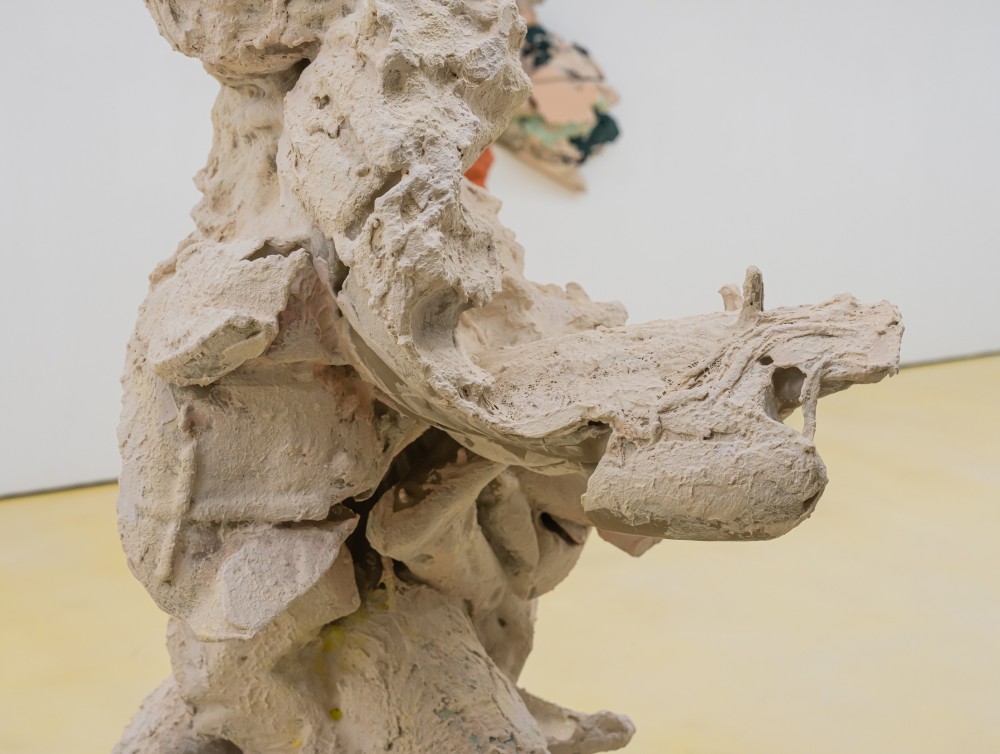
PERIGEE ARTIST #31 이병호
P I E C E
2023.06.02. FRI ~
2023.07.29. SAT
<어느 한 조각>
신승오 (페리지갤러리 디렉터)
이병호는 초기의 작업에서부터 인체를 작업의 대상으로 삼아 왔으며, 견고하게 고정된 조각에서 벗어나 끊임없이 변화하는 유동적인 조각을 추구하고 있다. 그가 천착하는 주제는 인체의 형태를 다양한 조각적 방법론 안에서 분석하고 관찰하는 것에서부터 시작된다. 그리고 그중에 그의 관심을 사로잡은 것은 아마도 토르소인 것으로 보인다. 정확히 말하면 토르소의 양감 있는 몸과 더불어 분리돼 버린 머리, 팔, 다리이다. ‘그렇다면 분리되어 버린 부분은 어떻게 보아야 할 것인가?’라는 질문과 함께 그는 연결과 분리, 종속된 것과 독립적인 것으로 시선을 돌린다. 그가 지속해 작품의 제목으로 삼고 있는 <Eccentric Abattis>에서 그 단서를 찾아보자. <아바티>는 프랑스어로 가금류의 몸을 제외한 날개, 다리, 내장과 같은 자투리 부위를 말하는 것으로 이는 요리에서 선택받지 못한 부분을 의미한다. 하지만 그는 이를 의미 없이 떨어져 나간 파편적인 것으로 생각하지 않고, 오히려 재조합되어 온전한 무엇인가로 다시 나타날 가능성으로 충만한 조형적 대상으로 바라본다. 따라서 그의 작업에서 부분이라는 것은 중요한 작업의 테제 중 하나이다. 이와 더불어 작가는 복제에 관해서도 관심이 있는데, 이 두 가지는 그의 작업 과정의 근간이 되는 중요한 요소이다.
먼저 복제에 대해 살펴보자. 작가가 복제에서 주목하는 것은....
A Piece
Seung Oh Shin (Director of Perigee Gallery)
ByungHo Lee has been employing the human body as the subject matter of his pieces since his early career and pursuing constantly changing fluid sculptures, breaking away from firmly fixed sculptures. The subject he has thoroughly delved into begins with analyzing and observing forms of the human body in diverse sculptural methodologies. More precisely, he contemplates the separation of the head, arms, and legs alongside a voluminous torso. With the question, “How should I view these separated parts” he has turned his attention to the matter of connection and separation as well as dependence and independence. Let’s find some clues in Eccentric Abattis, which he keeps adopting as the title of his work. Abattis is a French term referring to leftover pieces of poultry such as wings, feet, and giblets, especially unchosen parts in cooking. All the same, he does not regard it as a fragmentary thing separated without meaning but sees it as a formative object with the possibility of being recombined and as something intact. Thus, the connection of parts is one of th....
신승오 (페리지갤러리 디렉터)
이병호는 초기의 작업에서부터 인체를 작업의 대상으로 삼아 왔으며, 견고하게 고정된 조각에서 벗어나 끊임없이 변화하는 유동적인 조각을 추구하고 있다. 그가 천착하는 주제는 인체의 형태를 다양한 조각적 방법론 안에서 분석하고 관찰하는 것에서부터 시작된다. 그리고 그중에 그의 관심을 사로잡은 것은 아마도 토르소인 것으로 보인다. 정확히 말하면 토르소의 양감 있는 몸과 더불어 분리돼 버린 머리, 팔, 다리이다. ‘그렇다면 분리되어 버린 부분은 어떻게 보아야 할 것인가?’라는 질문과 함께 그는 연결과 분리, 종속된 것과 독립적인 것으로 시선을 돌린다. 그가 지속해 작품의 제목으로 삼고 있는 <Eccentric Abattis>에서 그 단서를 찾아보자. <아바티>는 프랑스어로 가금류의 몸을 제외한 날개, 다리, 내장과 같은 자투리 부위를 말하는 것으로 이는 요리에서 선택받지 못한 부분을 의미한다. 하지만 그는 이를 의미 없이 떨어져 나간 파편적인 것으로 생각하지 않고, 오히려 재조합되어 온전한 무엇인가로 다시 나타날 가능성으로 충만한 조형적 대상으로 바라본다. 따라서 그의 작업에서 부분이라는 것은 중요한 작업의 테제 중 하나이다. 이와 더불어 작가는 복제에 관해서도 관심이 있는데, 이 두 가지는 그의 작업 과정의 근간이 되는 중요한 요소이다.
먼저 복제에 대해 살펴보자. 작가가 복제에서 주목하는 것은 무엇인가의 시작점이 되는 원본과 이를 통해 무한히 반복되어 나가는 지속성이 가진 어떤 흐름이다. 여기에 더해 그는 자신이 이전 작업에서 만들어 낸 형태들을 복제의 대상으로 사용한다. 이처럼 그는 이미 만들어진 형태를 전혀 다른 맥락에 배치함으로써 발생하는 고정된 형태의 변화를 통해 새로운 의미를 불러일으킨다. 이를 가능하게 하는 것이 형태들의 재조합 과정이다. 예를 들어 인체의 형태를 규격화된 제품과도 같이 반복적으로 제작한다. 이렇게 만들어진 인체는 그대로 사용되는 것이 아니라 어떤 변화와 연결을 통해 다른 무엇인가가 되기 위한 재료가 되며, 이에 따라 사람의 형태를 가진 하나의 사물로 변모한다. 거기에 더해 최근에 작가는 이 인체들을 컴퓨터 프로그램의 이미지로 전환해 다양한 형태들을 축적하고 있다. 이들은 디지털 이미지로 변환된 이후 여러 조합을 생성하는 재료로서 자유롭게 상호 결합을 이루어 내고 있다. 또한 이 과정에서 이전의 원본이 훼손되거나 의도치 않게 삭제되는 오류를 만들어 내기도 하지만 작가는 이러한 현상을 모두 수용하는 태도를 보인다. 이와 같이 그의 작품에서 원래의 대상은 한층 더 그 형태적 특성을 상실하게 된다. 이렇게 완성된 조합은 3D 프린터에 의해 실체를 갖게 되면서 이미 이전의 지시성들은 사라지고 명명하기 힘든 구조로 새롭게 생성된다. 따라서 그가 무엇인가를 계속해서 변형시키는 행위를 통해 축적하고 있는 조형적 형태는 그 자체로 그의 조각을 유동적인 상태가 될 수 있도록 하는 기본적인 재료로서 기능하고 있다. 그렇기에 작가의 의도와 감각에 따라 선택되고 연결된 이 조각들은 그 작품 제목에 사용한 <Eccentric>의 의미처럼 기괴하고 기이하다. 이러한 그의 작품은 어떤 이유에서건 일시적으로 동요하여 일어난 것을 감지하여 반응하는 감각을 고스란히 담고 있으며, 이를 통해 자연스럽게 우리가 보편적으로 인식하는 선형적 시공간이 뒤틀린 형태로 드러난다.
이제 전시의 제목인 《PIECE》를 통해 부분의 의미를 살펴보자. 그가 조각, 부분을 의미하는 단어를 전시 제목으로 사용하는 것은 하나의 부분은 온전한 하나로 온전한 하나는 다시 어떤 부분으로 순환하는 것을 동시에 보여주고자 함이다. 그렇기에 부분이라는 것에 집중하는 이병호에게 있어서 인체 조각은 몸을 표현하기 위한 대상이 아니다. 여기서 더 나아가 그는 조각이라는 매체가 가지고 있는 기본적인 성질인 덩어리, 무게, 실존, 변함없음, 고정된, 완전함 같은 단어에서 벗어나 가볍고, 변화 가능성이 충만하고, 특정한 의미에 고정되지 않은 조각에 다다르고자 한다. 이를 위해 그는 하나의 부분을 고정된 시공간에 머물러 부분으로 남기기보다는 반복적 축적을 통해 자유로운 형태를 가진 온전한 하나의 대상으로 변모시킨다. 이는 부분을 뚜렷한 형태를 가진 조형미로 접근하는 것이 아니라 알 수 없는 내면의 심층이 가진 본질을 드러내려는 방식으로 만들어 나간다. 작가는 이런 태도로 우리에게 익숙한 인체를 아무런 제약 없이 부분적으로 해체하고 결합함으로써 눈앞에 등장할 수 없는 새로운 현존을 암시하는 일시적 형태를 제안한다. 이들은 명확한 규칙에 의해서 전체에서 분리되지만, 다분히 즉흥적이고 연극적인 분위기로 진행되기에 이 부분들은 비정형적이며, 그 어떤 것과도 이어질 수 있는 자유를 갖는다. 따라서 작가에 의해 독자적으로 존재하는 형태는 무작위적인 방식으로 추출되어 새로운 부분들의 조합을 가능하게 하는 연결이 중요하다.
그렇다면 이러한 연결들은 작품에서 어떻게 나타나는가? <Eccentric Abattis>는 전시장에서 개별의 작업인 동시에 하나의 작업처럼 보이기도 하며, 관객의 움직임에 따라 달라지는 형태들은 추상적인 모습으로 읽힌다. 여러 부분으로 이루어진 이 작품들은 작가의 의도에 의해 결합하기도 하지만 분리된 채 놓이기도 하며, 부분과 부분들은 그 연결에 인과관계가 있어 보이기도 하고 아무런 관계가 없어 보이기도 한다. 그리고 형태적으로는 연결된 부분의 흔적이나 연결을 가능하게 하는 장치가 고스란히 노출되거나 균형이 잡힌 형태가 아니라 아슬아슬하고 위태롭게 쌓여 있는 모습을 보여준다. 여기에 더해 다양한 색을 작품의 표면에 사용하고 있는데, 거즈를 붙여 새로운 표면을 만들거나 석고에 색 안료를 섞어 도색을 하고 있다. 이러한 색의 표현은 외부의 색이 내부로 침투하거나 내부의 색이 외부로 발산되는 듯한 느낌을 주거나 전체의 형태와는 다르게 세부적인 질감을 통해 무엇인가를 덧붙인 효과를 보인다. 그는 붓을 마치 조각의 도구처럼 인식하고 색을 칠할 때 긁어내거나 깎아내고, 덧붙이고 덜어내는 것과 같이 사용하는데, 작가는 이러한 표면에서 이루어지는 표현을 소조 작업하듯이 진행하였다고 말하고 있다. 이런 방식으로 그는 형태를 따라가거나 무시하고, 이미 만들어진 표현의 틀에서 벗어나 선택함으로써 자신의 눈 앞에 펼쳐진 대상에서 자유롭게 움직이고자 하였다. 이와 같은 표현들은 마치 퇴적층처럼 쌓여 나가는 모습으로 압축된 시간을 감각하게 해준다. 이는 작가의 감각에 의존해 나타난 의도를 가지고 완성된 형태를 규정하려는 것이 아니라 그 대상이 가진 형태를 포함한 다양한 감각적 본질을 표면의 현상으로 자연스럽게 흘러나오게 만들기 위함이다. 따라서 작가의 이러한 태도는 끝없는 밀어냄과 끌어당김, 유한성과 무한성 사이에서 발생할 수밖에 없는 우발적인 표면과 필연적인 균열의 발생을 유발한다. 결국 이병호가 의도하는 것은 각자의 형태가 가진 본질들이 서로 순응하게만 만들기보다는 충돌하듯이 맞닥뜨려 발생하는 갈등과 모순이 동시에 드러나는 상황을 만드는 것이다. 이러한 연결은 고요하던 부분과 관객 모두를 동요하게 만드는 일이다. 이렇게 그는 ‘무엇이 부분이고 전체인가?’에 대한 질문에서 출발해 우리는 어떤 선택을 통해 무엇을 남기고 무엇을 떠나보내는지 그리고 그것을 어떻게 반복적으로 이어 나가게 되는지 그 순환의 과정을 작업의 표면을 통해 더듬어 나가고 있다.
여기서 다시 그의 작업의 시작점이 된 인체로 돌아와 보자. 인체에는 인간을 구성하는 부분들의 명칭들이 있다. 이들은 손, 발, 뼈, 근육, 장기 등과 같이 인간의 내부와 외부의 형태와 기능에 의해 구분되지만, 작가는 이러한 명칭에서 벗어나 자신의 시각으로 구분하고 그 부분들을 개별적 형태를 가진 대상으로 만든다. 이들은 인체라는 종합적 집단에 속하면서도 구체성을 띤 명칭을 획득할 수 없으며, 각자의 부분에 의해 연결될 수도 있지만 결국은 독립된 존재이다. 그렇다면 작가가 보여주는 변형된 부분의 조합으로 나타나는 전체의 형태는 무엇으로 명명할 수 있을까? 일단 작가는 이들에게 ‘기이한 부분’으로 이름을 붙였다. 이렇게 보면 그는 인체에서 출발하지만, 어떤 선택들에 의해 제시되는 새로운 근원을 바탕으로 우연적이면서도 필연적으로 새로운 형태들이 만들어진다. 이번 전시에서 선보이는 작품들에서는 사실 그 어떤 전조도 느껴지지 않는데, 이는 더 이상 그것이 원래 어떤 것에서 기인하는 것인지 반드시 알 필요가 없기 때문일 것이다. 사실 우리에게 인체라는 명사도 가시적인 공동의 호칭에 지나지 않으며, 어떤 특정한 인식을 반영하는 분류의 범주, 어떤 성질의 다발을 지칭하는 것이다. 따라서 우리가 인체를 바라보고 인식하는 행위는 그 본체와 현상 다시 말해 무엇을 가능하게 하는 형태적 틀과 그 형태를 따라가거나 반하는 표면적 표현에 지나지 않는다고 할 수 있다. 그러므로 우리에게 중요한 것은 바로 지금 눈앞에 있는 어떤 대상을 직시하고 지금까지의 보편적으로 습득해 온 감각적 인식을 어떻게 넘어설 수 있을 것인가이다. 그렇기에 그의 작업은 완성된 결과물이 아니라 불안정하고, 불명확한 상황으로 우리를 이끈다. 그리고 그의 인체는 아무것도 아님과 동시에 완전하게 어떤 것을 가능하게 만드는 장소로 변모된다.
그럼, 이병호가 추구하는 조각은 무엇일까? 여기서 지금 우리에게 조각은 어떻게 다가오는가를 되물어 봐야 하겠다. 납작한 이미지에 익숙한 우리는 조각을 실체를 가진 대상이 아닌 가상의 것처럼 느끼거나 그 입체성과 질량의 무게감보다는 평면적이고 가벼운 감각으로 느끼지는 않는가? 하지만 우리는 언제나 실체적 근원과 본질이 존재한다면, 그것은 시각적인 실체를 가지기보다는 비가시적 대상인 것처럼 느낀다. 이렇게 우리는 여전히 이러한 실존과 감각의 간극 사이에 놓여있다. 이처럼 그의 작업도 조각적 실재와 감각적 성질이 접촉하여 충돌하고 분열하며 다시 조합된다. 그리고 이는 처음에 제시되는 형태에서 무심한 작가의 손에 의해 일정 부분을 덜어낸 것들이 결합한 비정형적인 모습으로 나타난다. 물론 그의 조각은 명확하고 거대한 형태와 실체를 가지고 있지만, 그것은 안과 밖이 없고 위와 아래도 없으며 정해진 규칙도 없다. 지금까지 살펴본 그의 작업 과정은 결코 어떤 목적지에 닿을 수 없는 영역으로 그의 조각을 이끈다. 이렇듯 그에게 조각은 명확하게 정의 내려 붙잡을 수 없는 찰나적 시공간에 머문다. 그렇기에 그의 작업은 선형적 시간의 흐름을 통해 자연스럽게 생성되는 조형성보다는 이것과 저것을 연결하고 결합하기 위해 제시되는 다양한 시공의 방향성 앞에서 어떤 선택을 해나갈 수 있는 자유로운 움직임이 관건이다. 결국 그에게 조각이란 어떤 기준이나 표준이 작동할 수 없는 구조를 만드는 일이며, 어떤 선택에 의한 결과의 일시적 잔상과 같다. 그렇기에 작가조차도 조각의 일부를 구성하는 한 부분에 지나지 않는다. 이렇게 그의 조각은 도달하는 곳이 어딘지 알 수 없는 미래를 향하는 스스로 생명력을 가진 유동적인 것이 되어간다. 그리고 이것이 그가 우리에게 들려주는 어느 한 조각(PIECE)의 이야기이다.
Seung Oh Shin (Director of Perigee Gallery)
ByungHo Lee has been employing the human body as the subject matter of his pieces since his early career and pursuing constantly changing fluid sculptures, breaking away from firmly fixed sculptures. The subject he has thoroughly delved into begins with analyzing and observing forms of the human body in diverse sculptural methodologies. More precisely, he contemplates the separation of the head, arms, and legs alongside a voluminous torso. With the question, “How should I view these separated parts” he has turned his attention to the matter of connection and separation as well as dependence and independence. Let’s find some clues in Eccentric Abattis, which he keeps adopting as the title of his work. Abattis is a French term referring to leftover pieces of poultry such as wings, feet, and giblets, especially unchosen parts in cooking. All the same, he does not regard it as a fragmentary thing separated without meaning but sees it as a formative object with the possibility of being recombined and as something intact. Thus, the connection of parts is one of the seminal themes in his work. In addition to this, Lee is also interested in the matter of reproduction. These are important elements that forge the basis of his process.
Let’s review his reproduction first. What he takes note of in reproduction are the original that is the starting point of something and some flow of continuity that repeats itself infinitely. Additionally, he uses forms he created in his previous works as objects for reproduction. As such, he brings about new meanings through changes in fixed forms that occur by placing already created forms in a completely different context. What makes this possible is the process of recombining forms. For example, the forms of the human body are repeatedly made like a standardized product. The human body created in this way is not used as it is but is used as a material to become something else through some transformation and connection. As a result, it becomes an object with a human form. In addition to this, he has recently converted these human bodies into computer-programmed images, thereby amassing a diversity of forms. These are intertwined as the material to bring about diverse combinations after being converted into digital images. Although originals were damaged or deleted unintentionally in this process, Lee embraces all of these phenomena. In this way, the original object in his work further loses its morphological characteristics. As the combination completed in this way is made substantial using a 3D printer, previous referentiality vanishes and a hard-to-name structure is newly created. Thus, the modeling images he accumulates through the act of continuously transforming something work as a basic material that makes his sculptures look fluid. Therefore, the pieces selected and connected according to his intention are uncanny and bizarre. Such works capture the sensation of detecting and reacting to something that has temporarily fluctuated for some reason. Through this, the linear space-time we commonly perceive is naturally revealed in a distorted form.
Now, let’s examine the meaning of the part through the title of the exhibition PIECE. The reason why he uses this word meaning piece or part as his exhibit’s title is to simultaneously show that the part and whole exist in a cycle. Thus, to Lee who concentrates primarily on the part, a human body sculpture is not an object to express the body itself. He tries to attain sculptures replete with lightness and variability, departing from notions defining the basic features of sculpture such as mass, weight, constancy, and completeness. To this end, he transforms one part into a complete object with a free form through repetitive accumulation rather than leaving it as a part of fixed space-time. He does not approach any part in terms of formative beauty with a distinct form but makes it to disclose the nature of the unknown. With this, he proposes a temporary form suggestive of a new invisible existence by partly dismantling and recombining familiar human bodies without any restrictions. Although they are separated from the whole by definite rules, such parts are atypical and have the freedom to be linked to anything because his work is conducted in a somewhat improvisatory and theatrical manner. Thus, as independently existing forms are extracted randomly, what matters is the connection that makes it possible to combine new parts.
How do these connections manifest in the artist's work? Eccentric Abattis stands as an individual piece within the gallery, and looks like one single work, while its abstract shapes appear transformed by the movements of the viewer. These works, comprising multiple parts, are sometimes unified or positioned separately based on the artist's intention. The relationships between their components appear casual or even nonexistent. In terms of form, connection marks or visible linking elements are disclosed and seem to be amassed precariously, but are not be in a balanced form. Furthermore, various colors are used on the surface of the work, making a new surface by attaching gauze or mixing color pigments with plaster. This expression of colors creates a sense of external hues seeping into the interior or internal colors radiating outward. Regarding his approach, the artist views the brush as a sculptural tool, utilizing scraping, carving, addition, and subtraction techniques during the painting process. Lee says that he did such surface work like modeling work. In doing so, he either adheres to or disregards predefined forms, liberating himself from established patterns. This unrestricted methodology allows the viewer to experience a compressed sense of time, akin to layers of sediment. Rather than aiming to define predetermined forms based on his intentions, the artist seeks to reveal various sensuous essences, including the form of an object, as surface phenomena. Consequently, this approach gives rise to accidental surfaces and inevitable ruptures that emerge from the interplay between endless pushing and pulling, and finite and infinite elements. Ultimately, Lee's intention lies in creating a situation where conflicts and contradictions are simultaneously exposed, rather than forcing a harmonization of each form's inherent nature. Guided by the question "What constitutes a part and what constitutes a whole?", he traces the surface of his work, unveiling the process of circulation pertaining to what we leave behind, what we relinquish, and how we navigate these choices.
Let's delve back into the human body, the foundation of his work. Each component of the human body possesses its own designated name, distinguished by its internal and external forms and functions—hands, feet, bones, muscles, and organs. However, Lee approaches them from his unique perspective, fragmenting them and transforming them into objects with distinct shapes, thereby breaking free from conventional nomenclature. While they belong to the overarching category of the human body, they cannot be assigned specific names. They may be connected by each individual part, yet ultimately, they exist as autonomous entities. In that case, what can we call the overall form that emerges from the amalgamation of these altered parts? Lee labels them "eccentric parts." As he embarks from the human body, new forms materialize unexpectedly and inevitably, driven by the new possibilities presented through deliberate choices. In fact, the exhibited works offer no trace of their original form, indicating that knowledge of their origins is no longer necessary. Even the term "human body" merely serves as a general descriptor, referring to a classification category that reflects a particular understanding or a set of defined attributes. Thus, it can be said that the act of observing and comprehending the human body is merely a superficial representation that either seeks or challenges its morphological framework. Consequently, what holds significance is how we perceive an object before us, surpassing a universally sensory interpretation. This is precisely why Lee's work guides us towards an unstable and indistinct realm, rather than a conclusive outcome. And his body is transformed into a place that is nothing and makes something possible perfectly.
What kind of sculpture does Lee pursue? To answer this question, we must first examine our understanding of sculpture. Given our familiarity with two-dimensional imagery, sculptures often appear intangible, imaginary, or even flat, lacking the weight and physicality we associate with substantial objects. Simultaneously, we recognize that if something possesses a genuine source and essence, it exists as an invisible entity rather than a visual substance. Hence, we find ourselves suspended between existence and perception. Similarly, Lee's work explores the intersection, collision, division, and recombination of sculptural realities and sensory qualities. His sculptures manifest in unconventional atypical forms, often with specific parts removed. Despite their imposing size and substantiality, they lack defined interiors or exteriors, tops or bottoms, and established rules. The journey we have examined thus far leads his sculptures into an elusive realm where a definite destination can never be reached. For the artist, sculpture resides in a transient space and time, defying clear definition and capture. Therefore, the essence of his work lies in the unrestricted movement to connect and combine disparate elements, making choices among various directions. Ultimately, to Lee, sculpture represents the act of constructing a framework that defies criteria and standards. It embodies a fleeting afterimage resulting from a particular choice. Consequently, even the artist himself becomes an integral part of the sculpture. In this manner, his sculptures gradually evolve into fluid entities, imbued with a vital energy propelling them toward an unknown future destination. And this is the story of a PIECE that he tells us.



